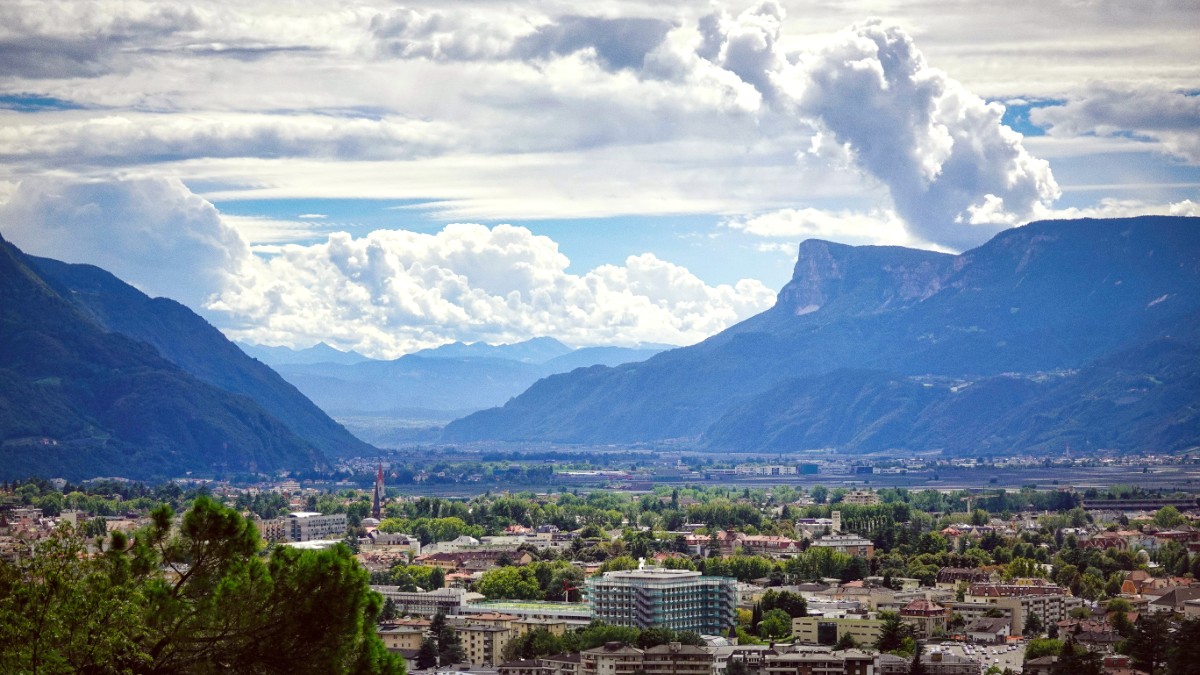
Trentino Alto Adige, Italy
The region's history as part of Austria-Hungary, combined with its current status as an autonomous Italian province, shaped an unique food heritage. This dual identity manifests in hearty and refined dishes, drawing from mountain traditions and Mediterranean influences.
Merano's cuisine a strong foundation of local produce and traditional methods. Ingredients like apples, grapes (for wine), speck, various cheeses, potatoes, rye bread, wild herbs, and venison are common.
Lunch (12:00 PM - 2:00 PM). Dinner (7:00 PM - 10:00 PM). Breakfast is a lighter affair.
Pre-dinner drink with complimentary snacks is common in the early evening.
A cover charge (€1-3) or service charge (10-15%) may appear on your bill. If a service charge is included, additional tipping is not expected.
Hearty dumplings, made from bread, often with speck, cheese, or spinach. Served with melted butter and Parmesan or in broth.
Find them widely available in traditional restaurants (Gasthäuser, Trattorias).
Half-moon-shaped pasta pockets, typically filled with spinach and ricotta cheese. Served with melted butter and grated Parmesan.
Most South Tyrolean restaurants offer this dish.
A regional specialty, this smoked, cured ham provides a distinctive taste. Often served as an appetizer with rye bread and horseradish.
Purchase it at local markets or find it on menus everywhere.
Krapfen (local doughnuts), Zelten (traditional fruit bread), Linzer Torte (shortbread tart).
Törggele (autumn wine tradition), Christmas Market specialties like roasted almonds and Glühwein.
Michelin-starred or Gault&Millau-listed restaurants with innovative interpretations of local and international cuisine.
Numerous establishments offering a mix of Italian and South Tyrolean dishes. Look for "Gasthof," "Trattoria," or "Restaurant" signs.
Pizzerias offer consistently good and budget-friendly meals. Bakeries sell affordable sandwiches, pastries, and sometimes simple hot dishes.
While local cuisine is main, some options for international cuisine (e.g., Asian, German) exist in Merano’s city center.
Diversity in dining.
Merano’s weekly market (Friday) on Lungo Passirio and smaller daily markets offer fresh produce, local specialties, and sometimes prepared foods.
Fresh local products.
Vegetarian options are relatively easy to find. Vegan options are improving; use apps like HappyCow.
Very limited availability. Travelers may need to self-cater or stick to vegetarian/fish options.
Awareness is growing; many pizzerias offer gluten-free crusts. Inform staff about allergies.
Internationally renowned wine and culinary event held annually in November.
Attracts connoisseurs.
"Meraner Frühling" (Spring) and various harvest festivals in autumn with the Törggele tradition.
Celebrate seasonal produce and new wine.
Mountain huts offer traditional, hearty meals for hikers in scenic alpine settings.
Guided food tours focus on local produce, wine, and traditional dishes.
Exploring Merano's culinary landscape promises a delightful journey. Do try the Knödel and Schlutzkrapfen for an authentic taste of the region.